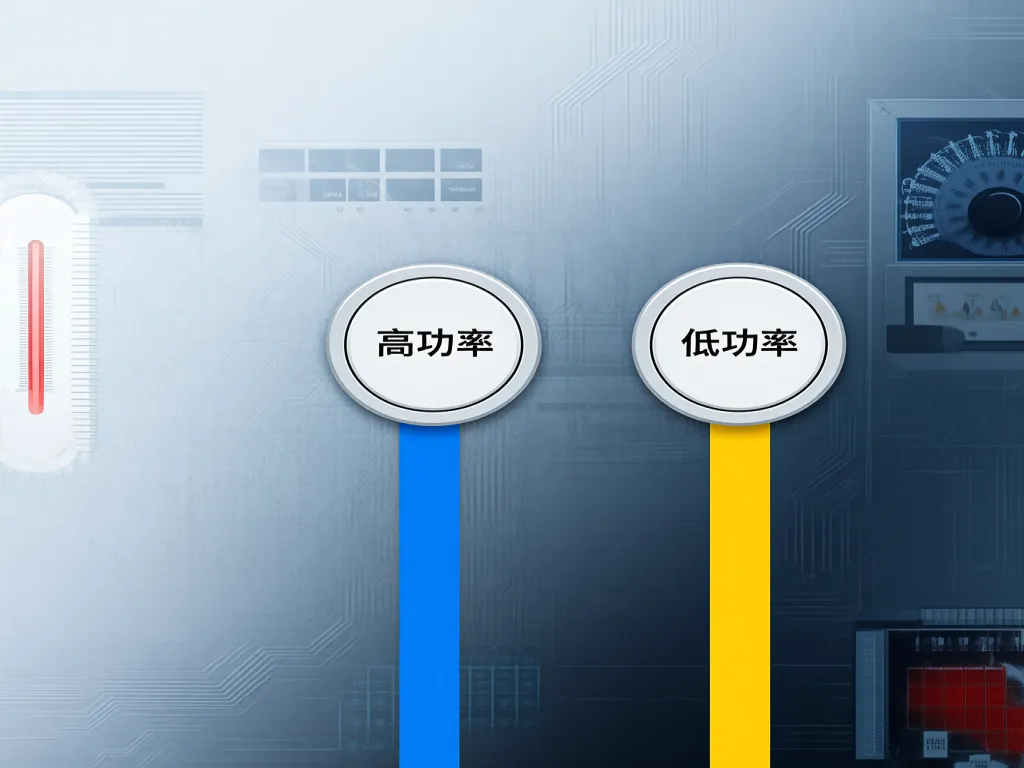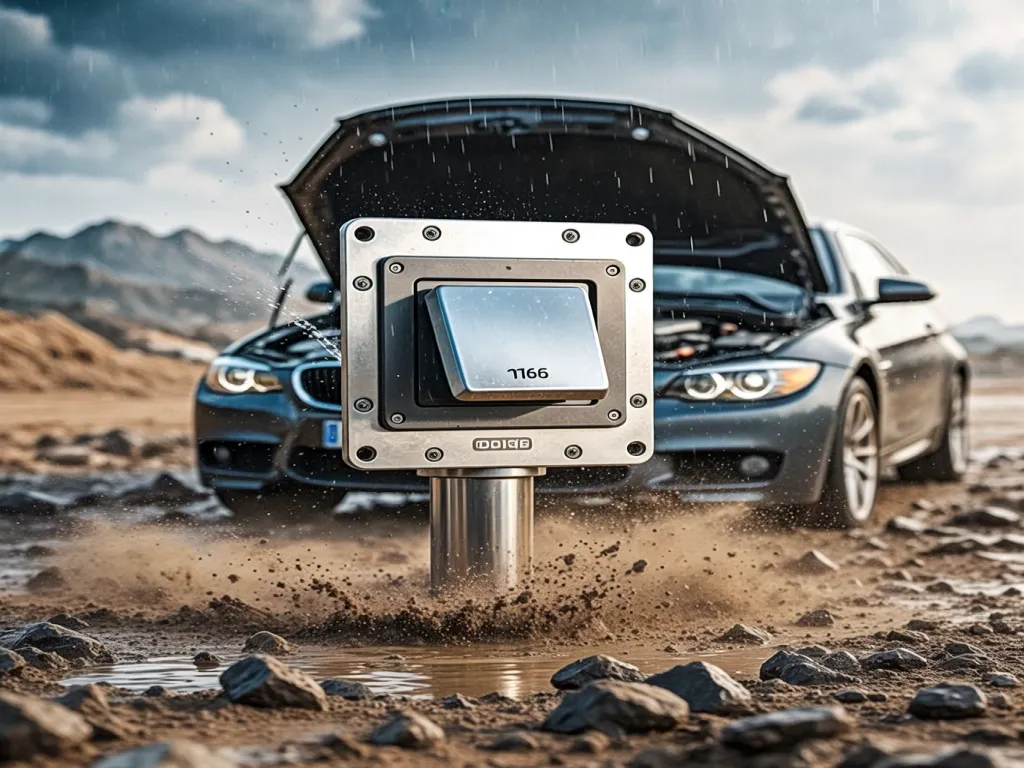Automotive Electronics Guide: Push Button Switch Insights

In the intricate world of automotive electronics, every component plays a pivotal role in ensuring peak performance and reliability. Among these, the humble push button switch stands out as a critical yet often overlooked element. Have you ever wondered how the right choice of push button switch can elevate your automotive projects from good to great? This blog dives deep into the performance parameters of push button switches, shedding light on how to select the perfect one for your needs. Let’s embark on a journey to unlock the secrets of push button switch selection in automotive electronics.

Rated Current: Analyzing the Impact of Different Rated Currents on Push Button Switch Application Scenarios, Such as Selection Differences Between High-Power Devices and Low-Power Systems
When it comes to selecting push button switches for automotive electronic systems, one of the most critical parameters to consider is the rated current. This isn’t just a number on a spec sheet; it’s a fundamental aspect that dictates how well the switch will perform in its intended environment. So, what exactly is rated current, and why does it matter so much? Let’s break it down. Rated current refers to the maximum amount of electrical current a push button switch can safely handle without overheating or failing. Think of it like the weight limit on an elevator – exceed it, and things could get messy. In automotive electronics, where reliability is non-negotiable, choosing a switch with the right rated current is crucial. Now, let’s talk about the two extremes: high-power devices and low-power systems. High-power devices, such as those found in electric vehicle powertrains or heavy-duty industrial machinery, require push button switches with high rated currents. These switches need to withstand significant electrical loads without compromising performance. On the other hand, low-power systems, like interior lighting controls or dashboard displays, can get by with switches that have lower rated currents. But here’s the thing: it’s not just about matching the rated current to the power requirements of the device. You also need to consider the operating environment. For instance, a push button switch in a high-temperature engine compartment might need a higher rated current than the same switch in a cooler, climate-controlled cabin. Why? Because heat affects electrical conductivity, and a switch operating in a hotter environment might need to handle more current to perform reliably. So, how do you determine the right rated current for your application? Start by calculating the maximum current draw of the device or system the switch will control. Then, add a safety margin – typically 20-30% – to account for potential surges or spikes in current. This ensures your switch won’t be pushed to its limits under normal operating conditions. But don’t just stop at the numbers. Consider the switch’s construction materials as well. Switches with higher rated currents often feature more robust contacts and terminals to handle the increased electrical load. These materials need to be corrosion-resistant and able to withstand repeated cycling without degrading. Have you ever wondered why some push button switches fail prematurely? Often, it’s because they were pushed beyond their rated current limits. Over time, this can lead to contact wear, arc damage, and ultimately, switch failure. By selecting a switch with the appropriate rated current, you’re not just ensuring reliability; you’re also extending the lifespan of your automotive electronic system. In the next section, we’ll dive deeper into how rated current interacts with other performance parameters, like operational life and IP protection ratings, to give you a holistic view of push button switch selection. But for now, let’s recap: rated current isn’t just a number; it’s a critical factor in ensuring your automotive electronic systems perform reliably, day in and day out.
High-Power Device Applications
In high-power automotive applications, such as electric vehicle battery management systems or hybrid powertrain controls, push button switches must handle substantial electrical currents. These switches often feature heavy-duty contacts made from materials like silver or silver alloys, which offer excellent conductivity and arc resistance. The rated current for these switches can range from several amps up to tens of amps, depending on the specific application. When selecting switches for high-power devices, it’s essential to consider not just the steady-state current but also the inrush current during startup. This transient spike can be several times higher than the normal operating current, so your switch must be rated to handle these peaks without failure.
Low-Power System Considerations
For low-power automotive systems, such as interior climate controls or infotainment interfaces, the rated current requirements are significantly lower. Switches in these applications might only need to handle currents in the milliamp range. However, don’t let the low numbers fool you – reliability is still paramount. Even in low-power systems, a failed switch can lead to user frustration or, in worst-case scenarios, safety issues. When selecting switches for low-power systems, focus on finding a balance between rated current and other performance parameters like operational life and tactile feel. A switch that’s over-specified for current might be unnecessarily expensive, while one that’s under-specified could lead to premature failure.
Environmental Factors Affecting Rated Current
The operating environment plays a significant role in determining the appropriate rated current for a push button switch. In automotive applications, temperature extremes are a common challenge. High temperatures can reduce the electrical resistance of materials, potentially allowing more current to flow than the switch is rated for. Conversely, cold temperatures can increase resistance, making it harder for the switch to conduct current. Humidity is another environmental factor to consider. Moisture can lead to corrosion on switch contacts, reducing their ability to carry current over time. That’s why many automotive push button switches feature sealed designs or conformal coatings to protect against moisture ingress. For more insights on environmental protection standards, you can refer to industry guidelines like IPC standards. When specifying a switch, always consider the worst-case environmental conditions it might face during its service life.

Operational Life: Exploring Its Relationship with Long-Term Stability in Automotive Electronic Devices and Assessing Product Durability Through Test Data
When it comes to automotive electronic devices, stability and reliability are non-negotiable. After all, these components are tasked with ensuring the smooth operation of everything from your car’s infotainment system to its critical safety features. Among these, the humble push button switch plays a pivotal role. But have you ever stopped to consider how its operational life directly impacts the long-term stability of your automotive electronics? Let’s dive deep into this crucial aspect.
Operational life, simply put, refers to the number of cycles a push button switch can undergo before it starts showing signs of wear or failure. In the automotive industry, where switches might be pressed thousands of times over their lifespan, this metric becomes incredibly important. Imagine a scenario where a critical safety feature, like the emergency brake release, fails due to a worn-out switch. The consequences could be dire.
So, how does operational life tie into the long-term stability of automotive electronic devices? Well, think of it this way: the longer a switch can reliably operate, the fewer chances there are for unexpected failures. This translates to fewer maintenance headaches, reduced downtime, and ultimately, a safer driving experience. But how do manufacturers ensure that their push button switches meet these stringent requirements?
The answer lies in rigorous testing and the use of reliable test data. Manufacturers subject their switches to a battery of tests designed to simulate real-world conditions. These tests might include accelerated life testing, where switches are cycled at a much faster rate than normal to predict their longevity. Environmental tests, such as exposure to extreme temperatures, humidity, and vibration, are also crucial. By analyzing the data from these tests, manufacturers can accurately predict the operational life of their switches under various conditions.
But as a buyer or engineer, how can you use this information to your advantage? The key is to look for switches that have undergone comprehensive testing and come with detailed test reports. These reports should include data on the number of cycles the switch can withstand, the conditions under which the tests were conducted, and any failure modes observed. For instance, when sourcing switches for specific automotive applications, such as refrigerator door switches (though primarily used in refrigerators, the principles of durability testing apply similarly to automotive switches), detailed test reports are invaluable. By reviewing this data, you can make an informed decision about which switch is best suited for your application.
It’s also worth noting that operational life isn’t the only factor to consider. The quality of materials used, the design of the switch, and the manufacturing process all play a role in determining durability. However, operational life remains a critical metric, especially when it comes to ensuring the long-term stability of automotive electronic devices.
So, the next time you’re selecting a push button switch for your automotive project, don’t just focus on the price or the brand. Dig deeper into the operational life data and understand how it relates to the reliability and stability of your device. After all, when it comes to automotive electronics, every little detail counts, and choosing the right switch could mean the difference between a smooth ride and a costly breakdown.
The Importance of Accelerated Life Testing
Accelerated life testing is a cornerstone of assessing push button switch durability. By subjecting switches to rapid cycling, manufacturers can quickly gather data on how they’ll perform over their expected lifespan. This not only speeds up the development process but also allows for more accurate predictions of switch longevity. For automotive engineers, understanding the results of these tests is crucial. It helps them select switches that can withstand the rigors of daily use without failing prematurely.
Environmental Factors and Their Impact
The automotive environment is harsh, with switches exposed to temperature extremes, humidity, and vibration. These factors can significantly affect a switch’s operational life. That’s why environmental testing is so important. By simulating these conditions in a controlled setting, manufacturers can identify potential failure points and make design improvements. As a buyer, look for switches that have been tested under conditions similar to those your device will encounter in the real world.
Interpreting Test Data for Informed Decisions
Test data can be overwhelming, but it’s essential for making informed decisions. When reviewing test reports, focus on the number of cycles the switch can withstand, the conditions of the tests, and any observed failure modes. Compare this data across different switches to find the one that best meets your needs. Remember, a switch with a higher operational life doesn’t always mean it’s the best choice. Consider the specific requirements of your application and choose a switch that balances durability with other important factors like cost and size.

IP Protection Ratings: Why They Matter in Automotive Electronics & How to Choose the Right One
When it comes to automotive electronics, the environment isn’t exactly forgiving. From dust-filled workshops to rain-soaked roads, your push button switch needs to handle more than just a gentle tap. That’s where IP (Ingress Protection) ratings come into play. These ratings tell you exactly how well a device can resist solids and liquids—critical factors for automotive applications. Let’s break down why IP ratings matter and how to pick the perfect protection level for your needs.
Understanding IP Ratings: What Do Those Numbers Mean?
An IP rating consists of two digits. The first digit (ranging from 0 to 6) indicates protection against solid objects like dust and debris. The second digit (ranging from 0 to 9) measures resistance to liquids, including water and moisture. For example, an IP67-rated push button switch is completely dust-tight (6) and can withstand temporary immersion in water (7). Simple enough, right? But how does this translate to real-world automotive use?
Why IP Ratings Are Critical in Automotive Environments
Imagine driving through a heavy downpour or navigating a dusty construction site. Your push button switch isn’t just sitting pretty inside a climate-controlled cabin—it’s exposed to elements that could compromise its performance. A low IP rating means your switch might fail prematurely due to dust ingress or water damage, leading to costly repairs or even safety hazards. On the flip side, an over-engineered switch with an unnecessary high IP rating could drive up costs without adding value. So, striking the right balance is key.
How to Choose the Right IP Rating for Your Automotive Application
Choosing the right IP rating starts with understanding your environment. Here’s a quick guide to help you decide:
1. Indoor Dashboard Controls (IP20–IP40)
If your push button switch is used inside the vehicle for dashboard controls, an IP20 or IP40 rating might suffice. These ratings protect against accidental contact with fingers (IP20) and splashing water from any direction (IP40). Since the cabin is relatively clean and dry, higher ratings aren’t always necessary—unless you expect frequent spills or messy passengers!
2. Engine Bay or Under-Hood Applications (IP65–IP67)
The engine bay is a harsh environment. Heat, vibrations, and occasional exposure to water or oil make durability a priority. An IP65-rated switch resists dust and low-pressure water jets, while an IP67 switch can handle temporary immersion. For most under-hood applications, IP65 or IP67 is ideal. For specialized refrigerator door switches, which also require robust protection, consider options like our CQC and CE certified switches or the KBM Series IP40-rated switches. But if your switch will be submerged or exposed to high-pressure cleaning, consider going higher.
3. Off-Road or Heavy-Duty Vehicles (IP67–IP69K)
Off-road vehicles, construction equipment, or agricultural machinery face extreme conditions. Mud, water, and debris are constant threats. Here, an IP67 rating is a good starting point, but for applications involving high-pressure washing (like in food processing or mining), an IP69K rating is essential. This rating ensures protection against close-range, high-pressure water jets—perfect for vehicles that get hosed down regularly.
Common Pitfalls to Avoid
One mistake I see often is assuming “higher is always better.” While an IP69K switch sounds impressive, it might be overkill—and more expensive—for a simple dashboard button. Conversely, skimping on protection can lead to failures down the road. Always match the IP rating to the actual exposure risk. Ask yourself: Will this switch encounter dust, moisture, or both? How often? Answering these questions will guide you to the right choice.
Real-World Example: A Case Study
Let’s say you’re designing a push button switch for a forklift used in a warehouse. The forklift operates indoors but is exposed to dust from pallets and occasional spills. An IP54-rated switch (protected against limited dust ingress and water splashes) would work well here. It’s cost-effective and meets the environmental demands without unnecessary features. Now, if that same forklift is used outdoors in a construction yard, you’d want to upgrade to IP65 or IP67 for better protection against rain and mud.
Wrapping Up: The Sweet Spot for Automotive Push Button Switches
Finding the right IP rating isn’t rocket science, but it does require a bit of foresight. Start by assessing your application’s exposure to solids and liquids, then choose a rating that balances protection and cost. Remember, a well-chosen IP rating means fewer failures, longer product life, and happier customers. So, next time you’re selecting a push button switch for your automotive project, ask yourself: What’s the worst this switch will face? Then pick an IP rating that laughs it off.
Navigating the world of push button switches in automotive electronics doesn’t have to be daunting. By understanding the nuances of rated current, operational life, and IP protection ratings, you’re now equipped to make informed decisions that enhance the performance and durability of your automotive devices. Remember, the right push button switch can be the difference between a seamless operation and a frustrating breakdown. So, why wait? Dive into the selection process with confidence, and watch as your automotive electronics soar to new heights of reliability and efficiency. What push button switch challenge will you tackle next in your automotive projects?

